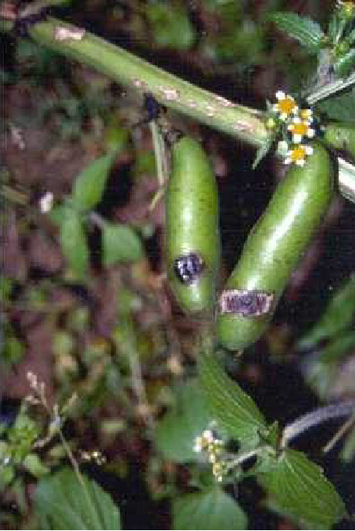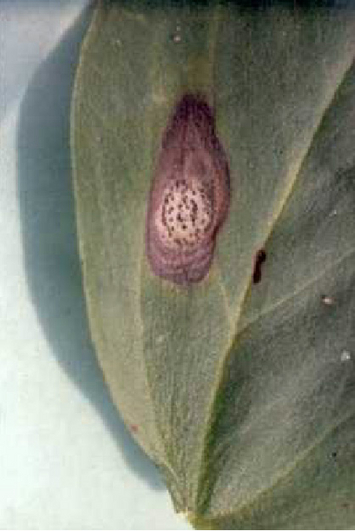Ascochyta blight
Ascochyta fabae
Damage symptoms


Light to dark brown or reddish brown spots appear on the leaves. These become lighter towards the center and are sharply defined. These spots often have dark spore containers (pycnidia) in the center. Dark brown to black, sunken spots can also appear on the pods.
Economic importance
For a long time, common bean blight was considered a major pest. Due to the decline in acreage and the use of tested seed, the pathogen has become much less important.
In the event of severe infestation, yield losses, a reduction in the quality of the harvested crop and contamination of the soil with the pathogen must be expected.
Last updated: 10.04.2025
automatically translated